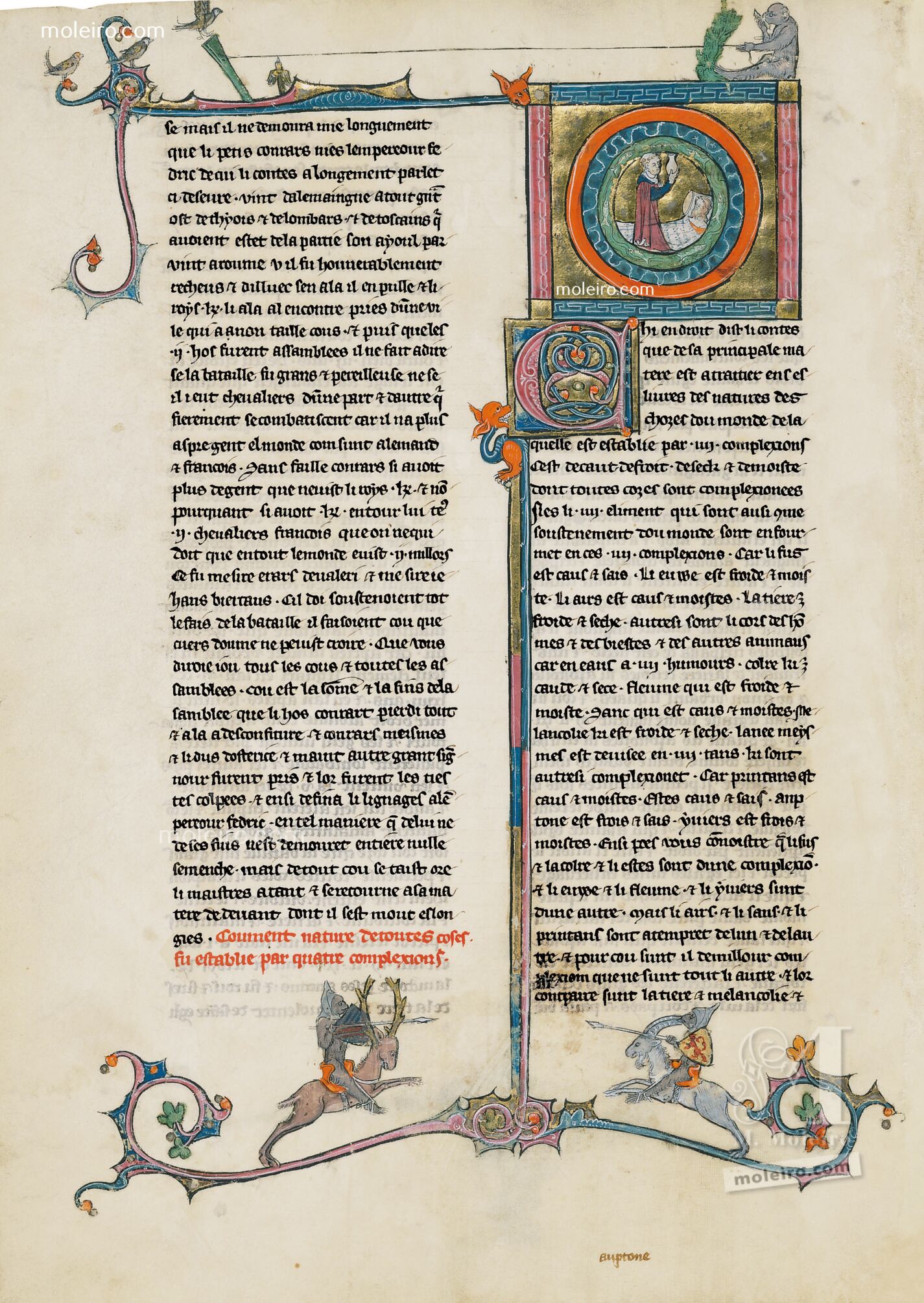The medallion of folio 28v represents a clergyman-sage with the corresponding characteristic features. He is next to a sick person’s bed examining the contents of a vessel of urine—one of the most widespread subjects in 14th century illustrations, particularly in parodies. This scene is set against a gold background and surrounded by concentric circles that symbolise one of the four elements, i.e. air (ether), water, fire and earth comprising the nature of man. Each circle was painted in keeping with its nature. Water (a marine element) was green in colour, and had fish swimming in it. Skies varied from dark to pale blue and even white (folio 28v shows several stars in the blue band together with a wavy, white line intended to represent the clouds). A bright orange band symbolised fire whilst an external, white band represented la coquille, the fifth element which, according to 12th and 13th century encyclopaedists following Aristotle, enveloped all the other elements.
The images in the margins of folio 28v represent the apes fight mounted on a deer and a goat (f. 28v). By placing the ape, owl and goat in close proximity, the artist obviously brings three “impure” animals together deliberately. The utterly realistic portrayal of apes, or tailless macaques to be more exact, well known to the inhabitants of European cities in the Middle Ages, stands out amongst the images in the margins, particularly the duels and hunting scenes. Apes symbolised vice and were sometimes even associated with the devil. Bestiaries, folklore and church sermons always emphasised their inclination to be crazy, stupid and vain. Their funny faces, gestures and ability to imitate people did however attract attention, and the wealthy reared monkeys in their homes for tertainment. Images of apes are found in the capitals of columns, in the ornamental initials and to an even greater extent, in the margins of manuscripts where they were given the opportunity to parody the actions of human beings.
